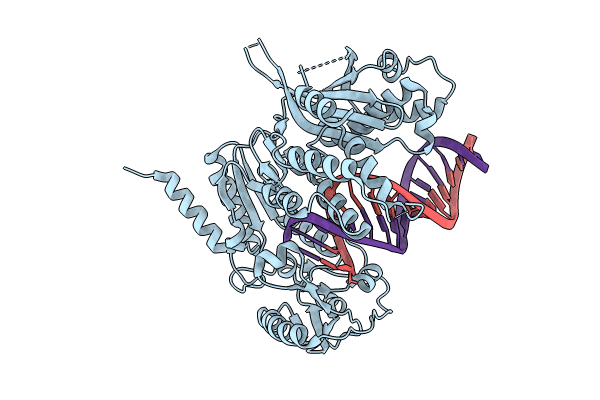
Deposition Date
2023-10-31
Release Date
2024-07-24
Last Version Date
2024-08-21
Entry Detail
PDB ID:
8R0S
Keywords:
Title:
Structure of reverse transcriptase from Cauliflower Mosaic Virus in complex with RNA/DNA hybrid
Biological Source:
Source Organism:
Cauliflower mosaic virus (Taxon ID: 10641)
synthetic gene (Taxon ID: 2005392)
synthetic gene (Taxon ID: 2005392)
Host Organism:
Method Details:
Experimental Method:
Resolution:
2.35 Å
R-Value Free:
0.26
R-Value Work:
0.21
R-Value Observed:
0.21
Space Group:
P 21 21 2


